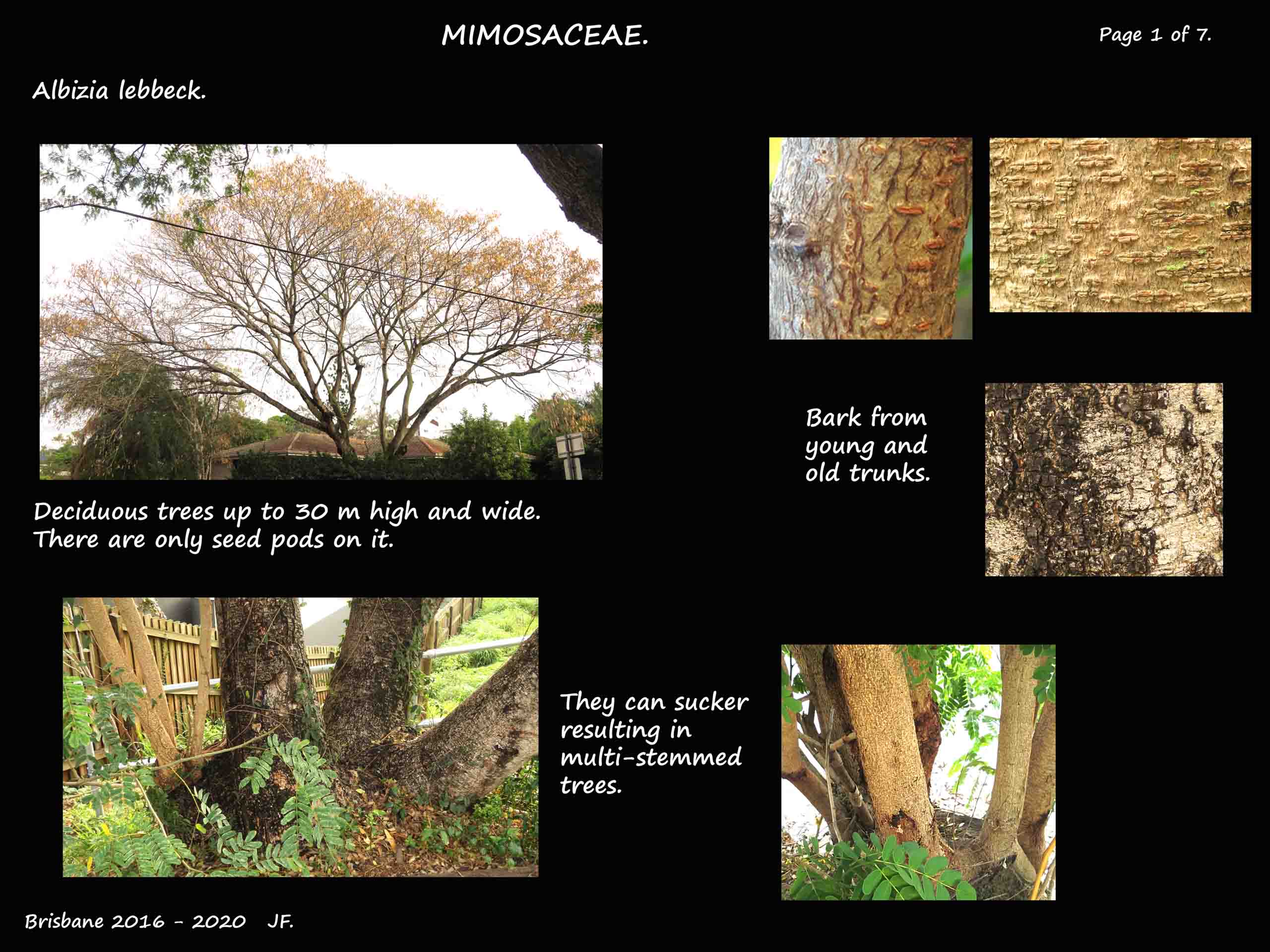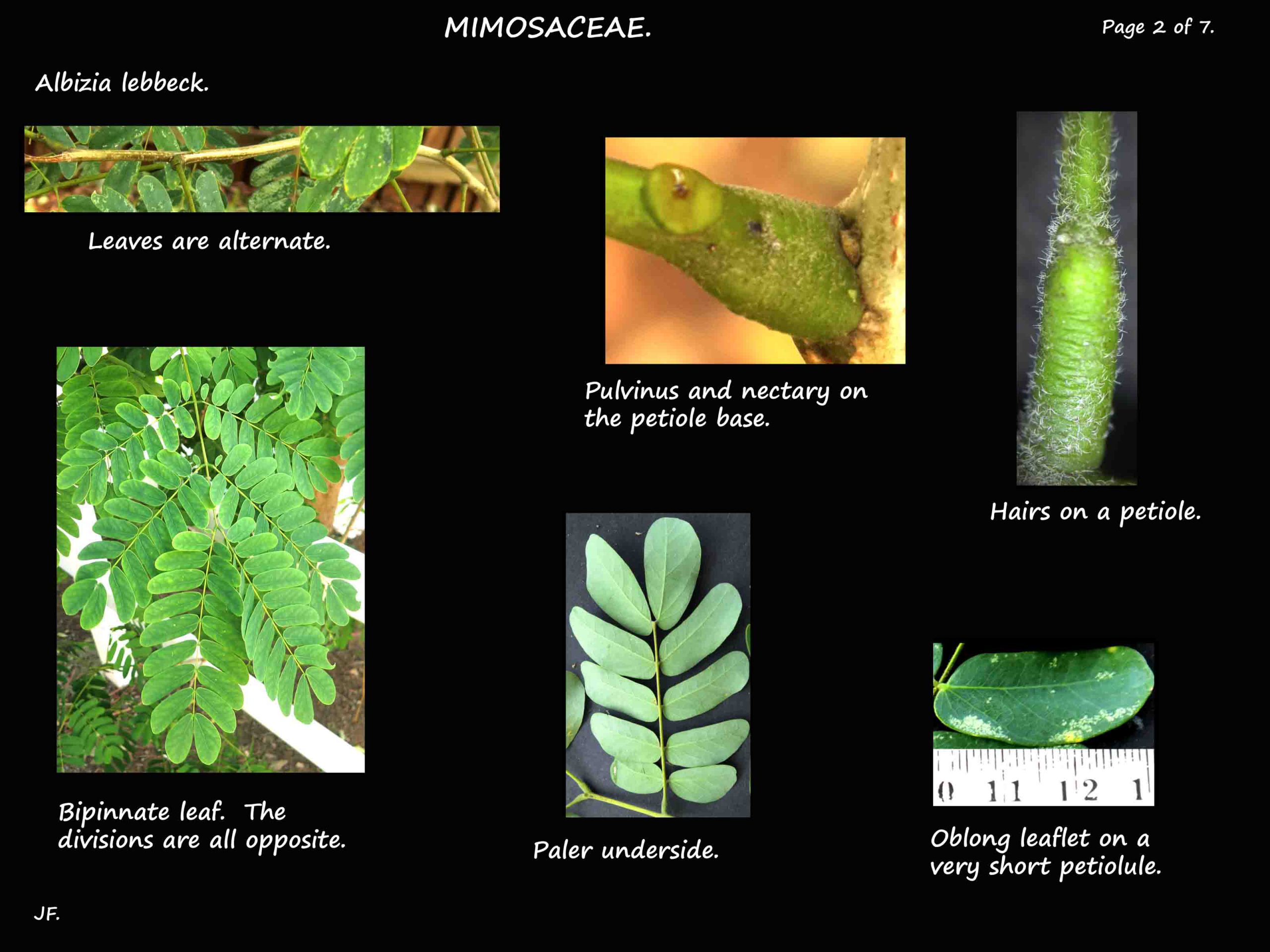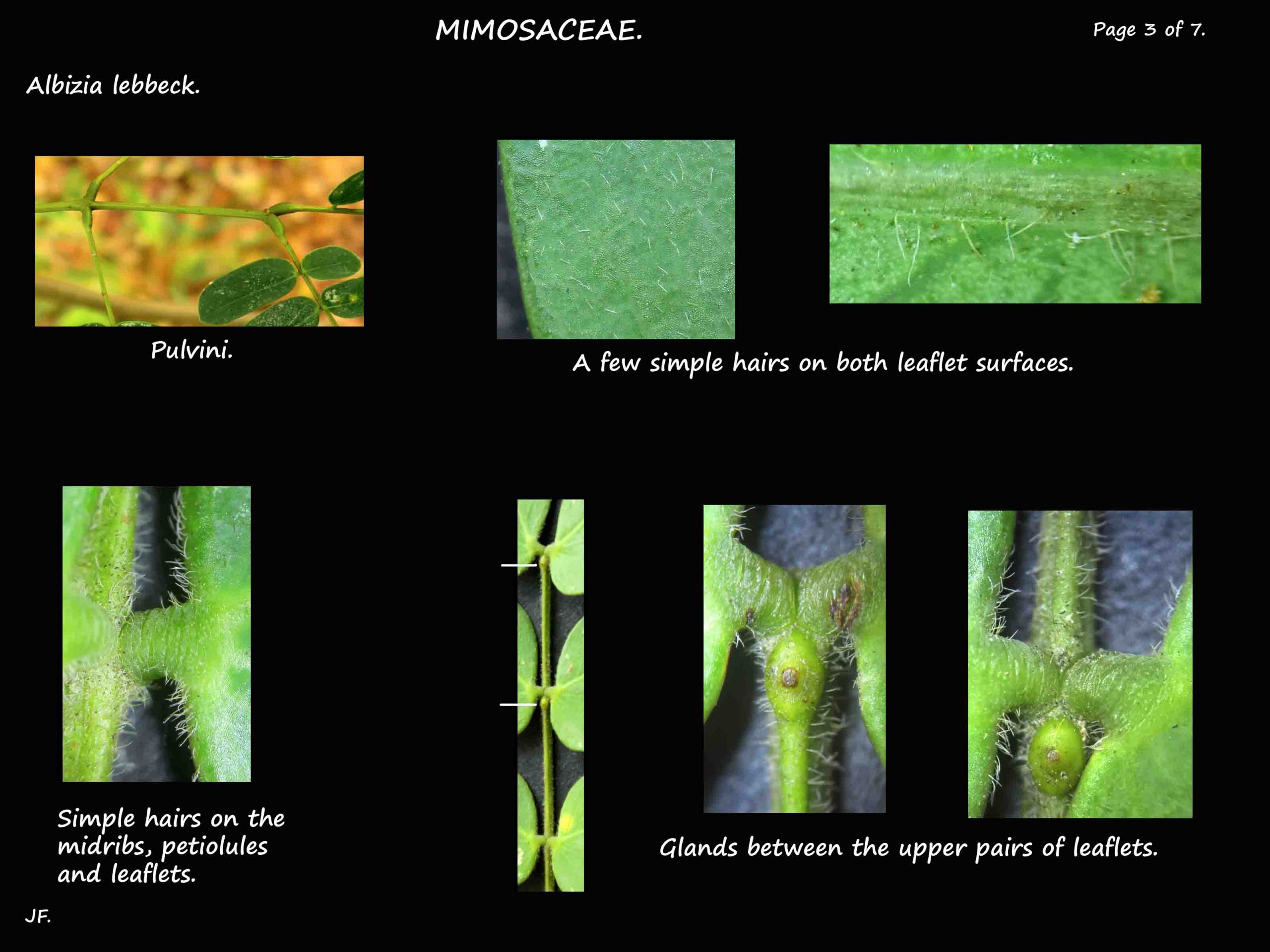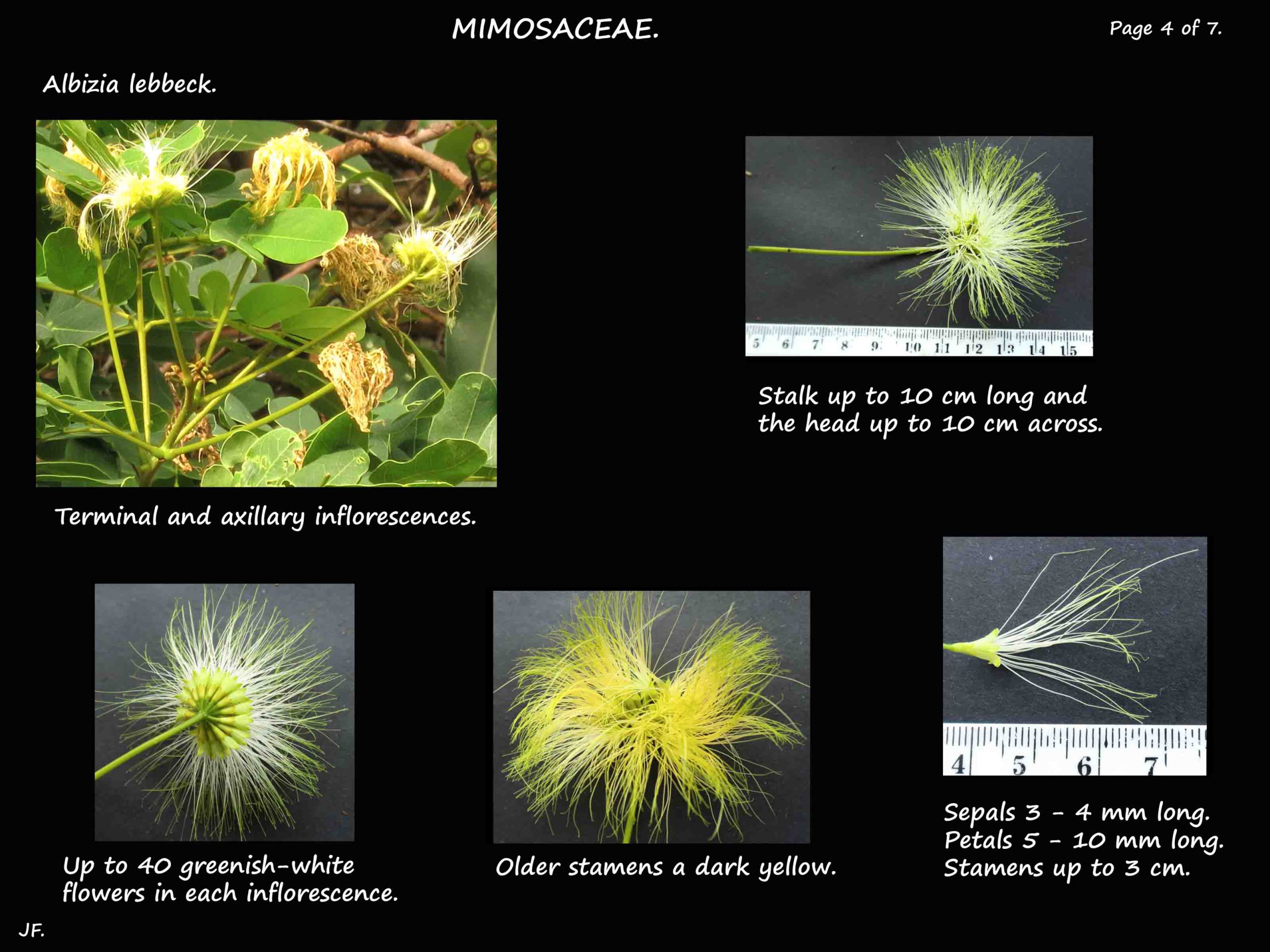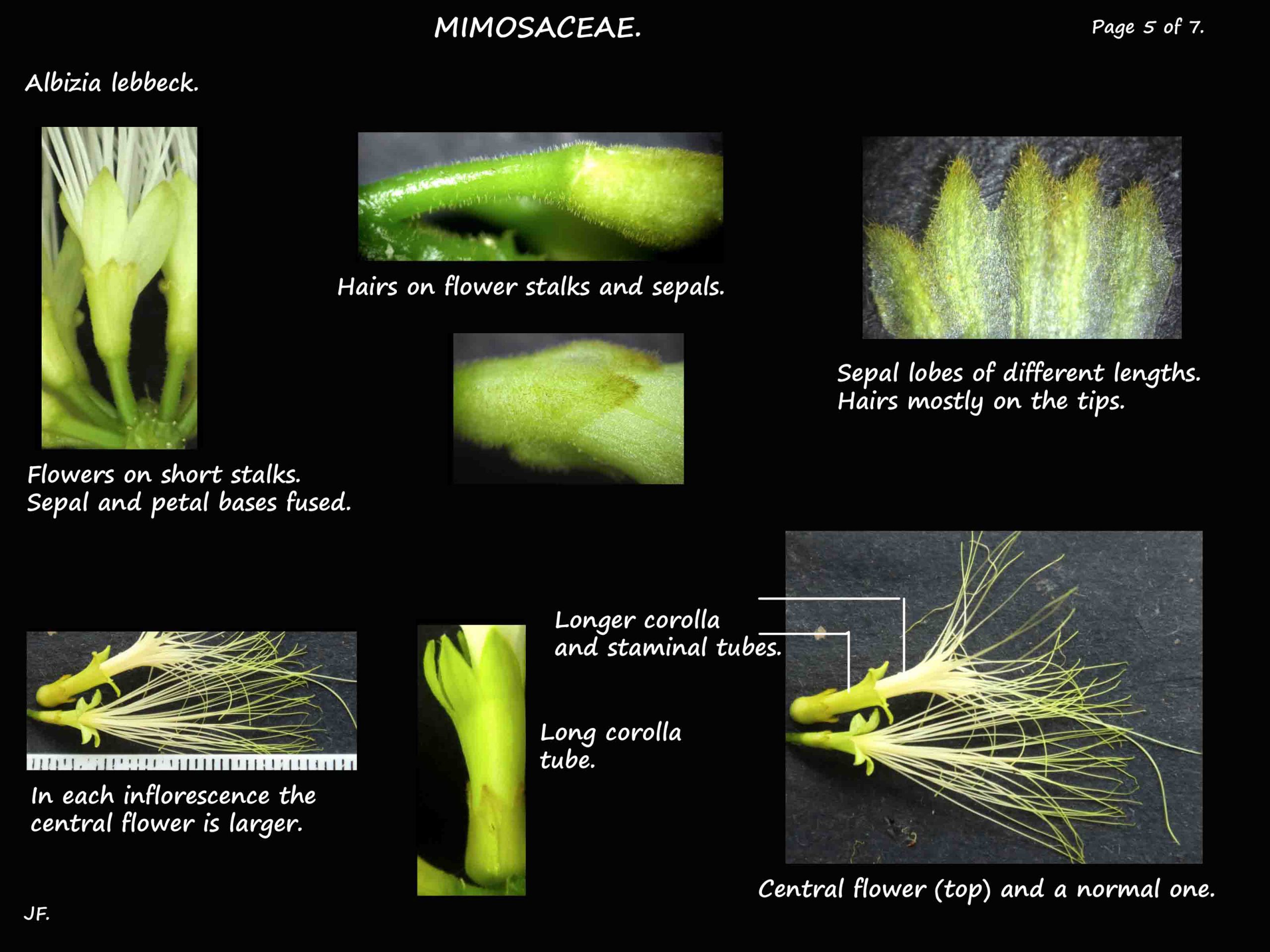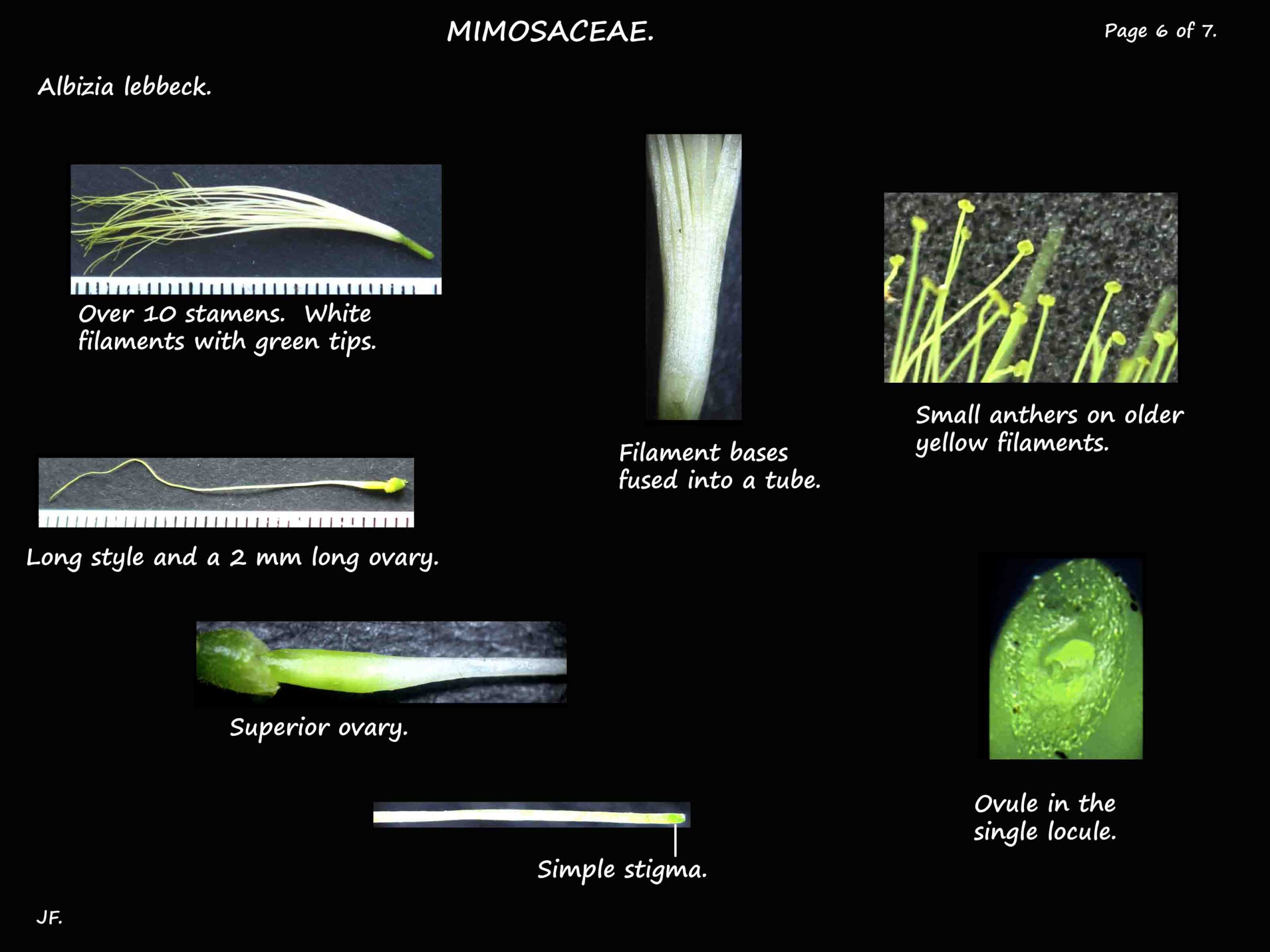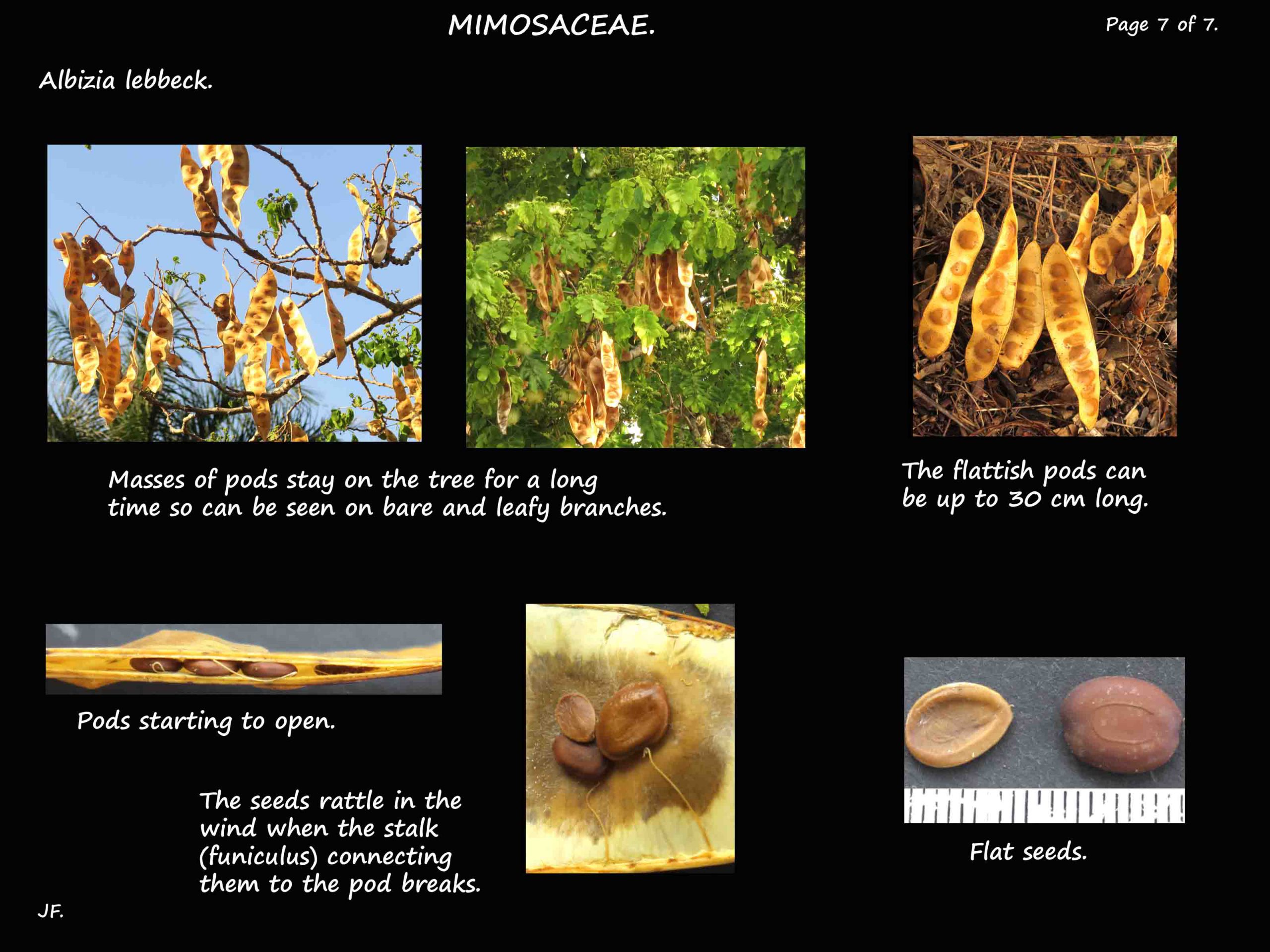Albizia.
In Queensland, and most of Australia, Albizia are in Family Mimosaceae.
There are around 150 tropical and subtropical species.
They are native to S.E. Asia, Africa and across northern Australia.
Some have been widely cultivated and become naturalised.
They are commonly known as Silk trees or just as Albizia (Albizzia is an older spelling).
Albizia lebbeck.
It is known in Australia as Lebbeck, Rain or Powder-puff tree or just as Albizia.
It is thought to be native to S.E. Asia and northern Australia.
One of the most commonly planted species, it is widely naturalised and is a weed
in some of these areas including S. E. Queensland.
They are deciduous trees 15 to 30 m high and up to 30 m wide.
They can sucker and form multi-stemmed trees.
Young green stems have some hairs and older stems are brown or greyish.
The alternately arranged, bipinnate leaves are up to 15 cm long.
The bases of the petioles and petiolules have a swelling or pulvinus.
There is an extrafloral nectary near the base of the petiole.
The leaves have 2 – 4 (1 – 5) pairs of pinnae up to 6 cm long.
Each pinna has 3 to 11 opposite pairs of leaflets.
The oval to oblong leaflets are on short petiolules.
Leaflets may may be smooth or have a few hairs.
There are glands between the petiolules of the upper pairs of leaflets.
Inflorescences are 1 to a few, terminal or upper axillary clusters of flowers.
Each roughly globular cluster, up to 10 cm across, has up to 40 flowers.
Each head is on a stalk or peduncle up to 10 cm long.
The individual flowers are on stalks or pedicels a few mms long.
The 5 sepals, around 3 – 4 mm long, have their bases fused and pointed lobes.
There may be some short, fine hairs on the tips.
The 5 petals are similar except they are 5 to 10 mm long.
Both are a pale greenish-white with darker green tips.
The numerous stamens (over 10) are the most prominent part of the flower.
They are up to 3 cm long with their bases fused into a tube.
With a whitish base and greenish tips they become dark yellow with age.
The central flower in each cluster is larger.
It has longer corolla and staminal tubes.
The superior ovary, with a single locule, has a single apical style.
The fruit are hairless oblong pods up to around 30 cm long and 5 cm wide.
They are thin and the up to 12 seeds form bumps along them.
The edges may be wavy and the mature seeds rattle in them.
Each tree has masses of the pale brown, indehiscent pods.
The flattened, round to oval seeds are around 10 mm wide.
J.F.
